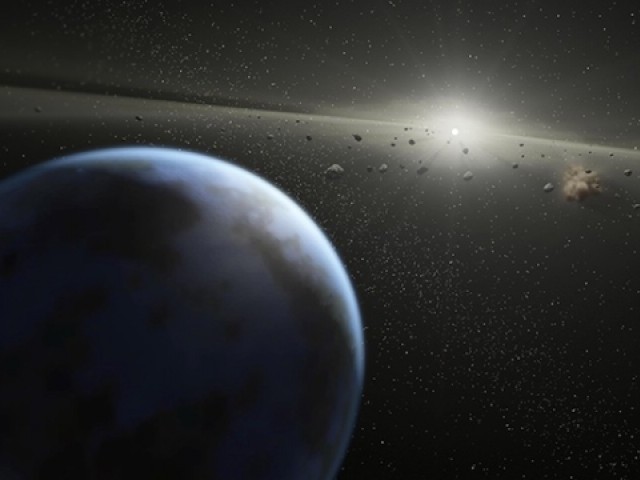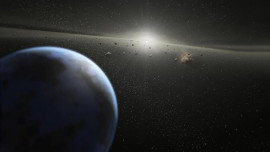
A 1,000-metre wide asteroid will make a relatively close but harmless pass by Earth on Friday, according to NASA.
The object called ‘2014-YB35’ is travelling at more than 23,000 mph in space.
Although it is not unusual for small meteorites to whizz past Earth, the size of the asteroid poses a real threat with fears of any impact triggering earthquakes and tsunamis.
This rock is forecast to pass within 2.8 million miles - a tiny distance in astronomical terms - of Earth on Friday, according to NASA's Near Earth Object Programme.
It is estimated to be from between 500 metres and 1km wide, with 990 metres the most likely.
The object was first spotted by the Catalina Sky Survey at the end of last year with astronomers expected to be closely watching its progress this week.
However, experts warn it is only a matter of time before an asteroid sets buzz to Earth.
Professor of astronomy at the University of Buckinghamshire, Bill Napier told the Express there is a "very real risk" of a comet or damaging asteroid hitting Earth.
"With something like YB35, we are looking at a scale of global destruction, something that would pose a risk to the continuation of the planet.
"These events are however very rare, it is the smaller yet still very damaging impacts which are a very real threat," he added.
This article originally appeared on Express.











































COMMENTS (7)
Comments are moderated and generally will be posted if they are on-topic and not abusive.
For more information, please see our Comments FAQ